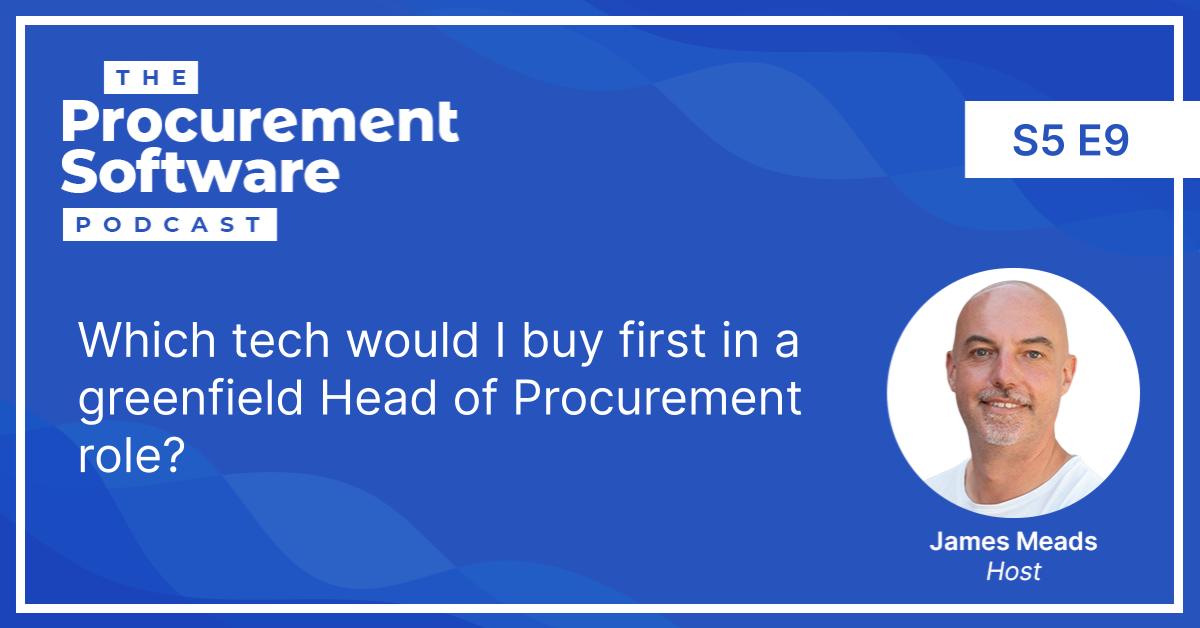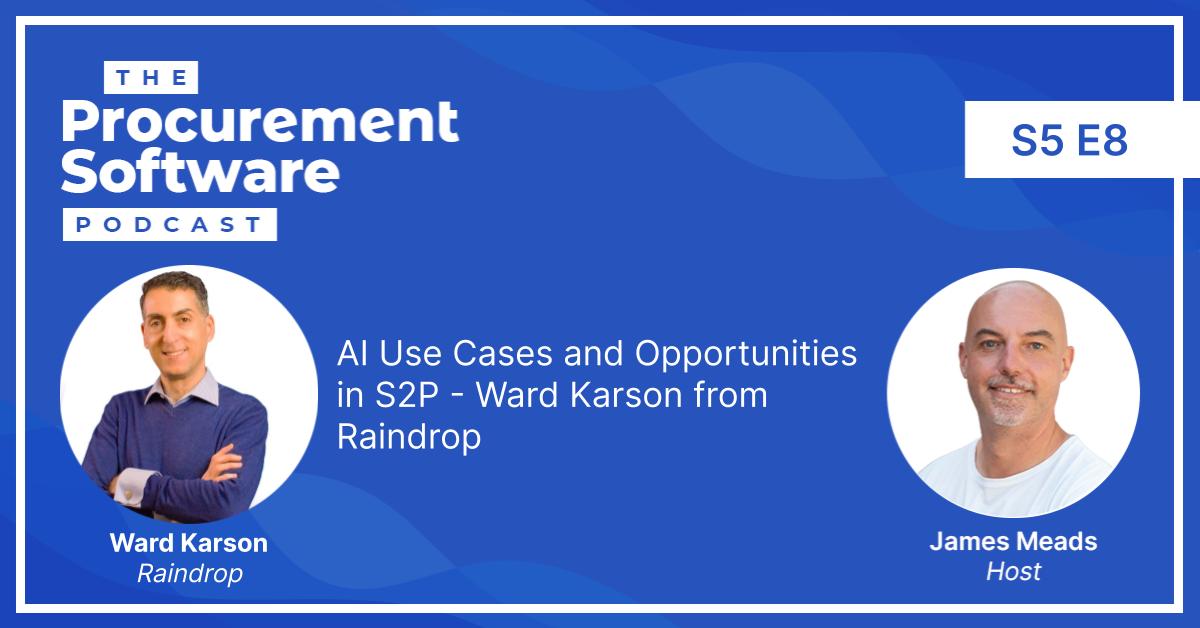Digital transformation doesn’t necessarily have to be complex. Sometimes, an end-to-end source-to-pay (S2P) solution that joins up the dots, and automates a lot of otherwise manual processes, can give a huge productivity advantage.
The mid market has traditionally been underserved by procurement software, with tech companies typically going after large enterprise clients at their expense.
One of the older players in the European market is Onventis, who have successfully been improving and extending their offering since 2000 and successfully serving mid-market businesses. My guest today is their CEO, Frank Schmidt.
Providing a solid solution for source-to-pay in the mid market – Onventis has survived and thrived
Frank’s audio unfortunately is pretty bad, so apologies for that ahead of the interview. We did the best we could.
Who is the target market for Onventis?
Mid-sized businesses for Onventis are those who fall into the bracket of internationally active manufacturing companies with an annual turnover of EUR 100 million to EUR 1.5 billion (approx. $110 million to $1.65 billion). Although they have customers who are much bigger than this too.
What does their suite cover?
At its core, Onventis is a source-to-pay suite but its functionality is more wide reaching than this. Their sourcing module goes right through to offer auctions, as well as basic contract management functionality.
There are also additional applications covering supplier and risk management, as well as the catalogues and e-procurement functionality associated with the traditional full stack P2P offerings.
How do they fare against some of the enterprise suites?
Frank agrees that towards the upper end of their customer base, they are playing on the same turf as some of the more well-known enterprise level procurement suite providers.
There has already been a lot of consolidation in this market, and Onventis has also been no stranger to this.
Their recent acquisition of Swedish spend analytics platform Spendency, along with an invoice automation platform called Workflow Wise who were acquired by Onventis two years ago. My interview with Arvid Fredin, who was Spendency’s CEO prior to the acquisition, can be found in Episode 24 of the podcast.
As a German company, it’s no surprise to learn that 70% of Onventis’ customers are in a SAP ecosystem. This enables them to offer fully standardised integration with SAP, when so much of their business comes from customers already using SAP as their ERP system. Coming into contact with Ariba and Coupa is also commonplace.
Why go for a suite vs. 2 or 3 best-of-breed solutions bolted together?
Customers in this segment are always somewhat more price sensitive than enterprise customers, and the “time to value” is key in terms of seeing the ROI on their investment.
Time to implementation is key, as is the ability to pick and choose which modules of the suite to purchase in the initial phase. Customers often want to see proof of concept or run a pilot and to see a positive return on their price to performance ratio.
Offering modularity allows companies to tackle their digital transformation in a piece-by-piece way by capturing the most added value at first and then building on this.
How much greenfield business is still out there?
There isn’t much greenfield business out there, which kind of surprised me a little when Frank said this. Most of the business they see is replacement business or expansion business in one form or another.
Frank sees a lot of legacy tech, fragmented systems and botched transformations out there. Much of the technology is siloed, such as invoice automation in Accounts Payable, which is an area they often come across and are asked to consolidate into their suite approach.
There is also a differentiation in the various industry sectors. Industrial manufacturing industries such as automotive are often ahead of their counterparts in service industries, where Frank still sees a fair bit of greenfield business and very immature procurement functions.
He also makes the point that mid-sized businesses are typically leaner and less bureaucratic than large corporates and can implement faster, meaning that decisions are taken on investment rather than being consistently postponed.
What about data quality: Is this an obstacle to sales?
Data is a huge topic, but it’s something which procurement teams can no longer ignore. Frank cites the example of the need to make inroads in terms of measuring CO2 reduction as part of companies’ sustainability initiatives.
40% of the mid-sized businesses that Onventis surveyed as part of their annual barometer of market research did not have a formal supplier qualification process in place, nor did they have a plan for climate neutral goals.
Frank therefore makes the point that lack of process maturity is arguably a bigger issue than poor quality data.
What explains the lack of process?
It can be a mixture of two things:
- A lack of voice for procurement at board level;
- Missing digital and data analysis capabilities within procurement teams of this size
Internal SRM systems are usually spreadsheet based and often don’t have connections to external data feeds and market intelligence, which can improve and complement the data.
Frank talks a bit about the forthcoming supply chain law in Germany, the “Lieferkettengesetz”, which comes into force in January 2023.
How does implementation differ based on different customers and industry sectors?
While there will always be challenges and differences in the sales process and cycle between different sectors and procurement maturity, Frank sees the biggest challenge almost universally to be the change management and digital skills capabilities within procurement teams.
Getting to the sale is one thing, but there seems to consistently be a skills shortage when it comes to the hard digital skills, along with the soft skills of change management, communication and influence.
Acknowledging this has led Onventis to include their implementation consulting team as part of the sales process.
Depending on where a customer has the most pain will usually dictate the departments and stakeholders who are heavily involved in the sourcing process.
70% of the requests and sales enquiries they see are actually originating from procurement teams, even if the push is coming from e.g. the need for more invoice automation which is typically managed by finance.
What about their technology roadmap
Frank cites three key areas where they are developing or improving:
- Working with their supplier network to ensure that the platform remains competitive for a UX perspective for sellers to use. Catalogue integration and usability is a key area of focus. They have a direct integration with Amazon business and generic search APIs across other networks and marketplace platforms to enable guided buying.
- Opening their network to third party platforms to enable enrichment of supplier data as part of SRM enhancements and ongoing need to have more transparency and improved data reliability for ESG initiatives.
- Growing out the AI capabilities of Spendency, their recent spend analytics acquisition, and integrating this into the wider Onventis modular offering.


